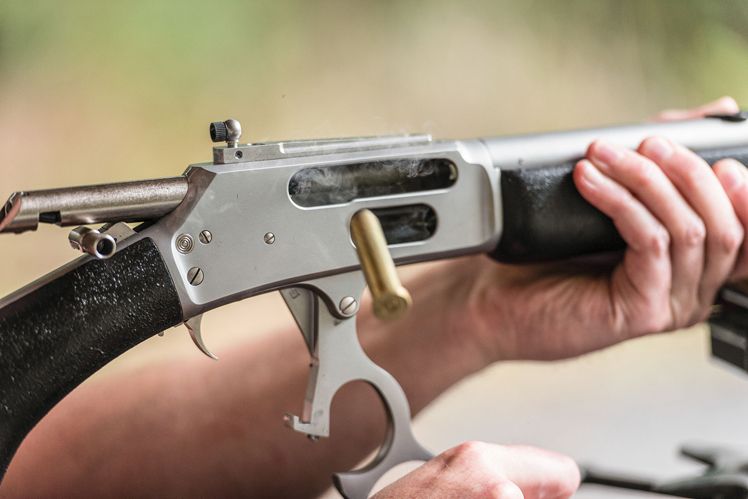
What is it about lever guns? Particularly, big-bore thumper lever guns? They’re just so damn appealing. And with its compact barrel, big stainless steel lever, and textured black furniture, the Marlin 1895 Trapper chambered in .45-70 Government is a particularly handsome beast.
Most hunters and gun enthusiasts will already be familiar with Marlin’s 1895 series - particularly the GBL and SBL ‘Guide Guns’ - and the Marlin Trapper is the latest addition to this line-up.
I should mention that when I first heard about the introduction of another lever gun to Marlin’s range, my expectations for quality were somewhat pessimistic.
Marlin’s acquisition by Remington twelve years ago was a tumultuous time for the brand. Various manufacturing teething problems, combined with more than a few hiccups in the quality control department, did no favours for the gun’s reputation.
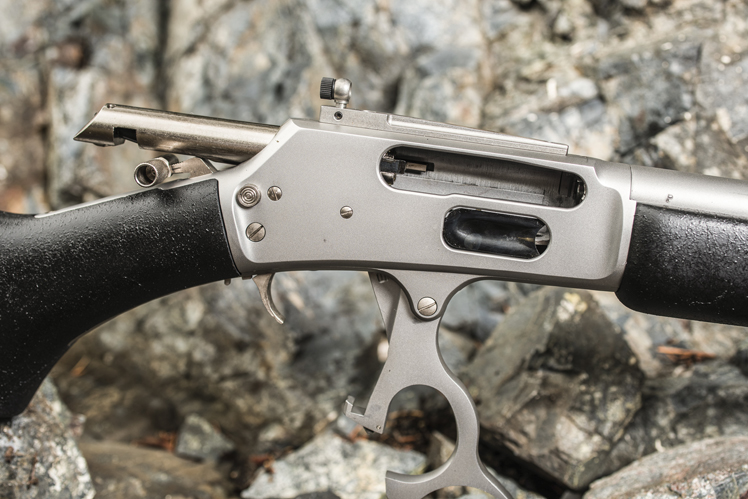
The machining on the Trapper’s receiver, bolt, lever, and barrel is all very tidy. There are no large gaps, no stand-out tool marks, and no sloppy fitting - in fact, the fit and finish on all metal parts is as good as any other lever gun on the market. The action feels firm, but everything still cycles smoothly and reliably, and the trigger breaks crisply at five and half pounds without any creep, wobble or over-travel.
Perhaps my only complaint - and it’s a very minor one - about the metalwork is the lack of beveled edges on the lever. The edges are quite sharp and, in heavy use when cycling quickly with bare hands, they can rub the backs of fingers quite raw. I’m not the only one to have brought this up with Marlin, so perhaps they’ll make some adjustments in the future, but in the meantime, if it becomes an issue for you, this could be easily fixed at home with a few passes of an appropriate abrasive.
Apart from a few small components, such as the trigger and front sight, all metalwork is stainless steel which has been bead-blasted to a mat finish to reduce shine. This, combined with the stock’s rubberized coating makes this rifle as impervious to foul weather as it’s possible to get. The stock’s coating has also been heavily texturized to provide excellent grip in wet weather. Whilst this texture appears to have been applied somewhat haphazardly giving an uneven appearance, it certainly works well. During one of our test days on the range, the horizontal rain was heavy enough to tear targets from their backers and shred the paper, but nothing could have torn the rifle from my soaking wet hands!
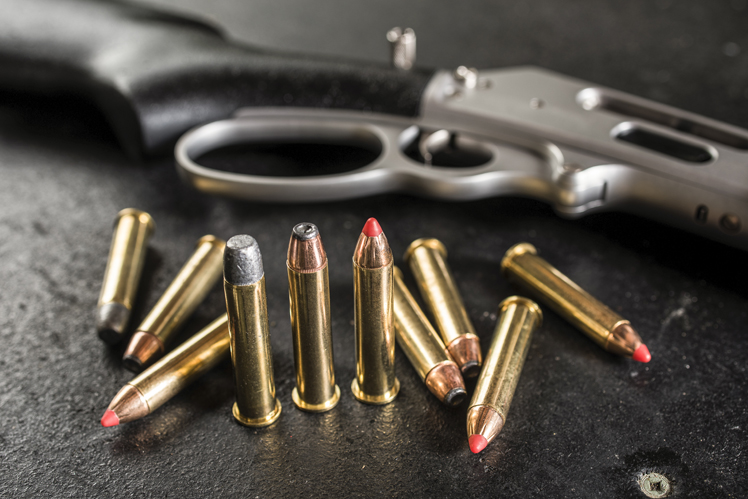
Like many modern lever-action rifles, instead of a traditional straight grip the Trapper comes with a “pistol grip” providing about thirty degrees of downwards curve, and a more rounded and contoured shape. This grip is designed to be more comfortable to shoot due to the less aggressive wrist angle more palm-hugging shape but, personally, I don’t notice much of a difference compared to my 1984s straight grip. If anything, I prefer the shorter lever throw that you get from a straight grip, not to mention the more traditional look of a straight grip. Either way, this is neither a deal breaker or deal maker.
The rear of the butt stock is garnished with a Pachmayer Decelerator rubber recoil pad which does a good job keeping a bruised shoulder at bay while holding the rifle firmly in position.
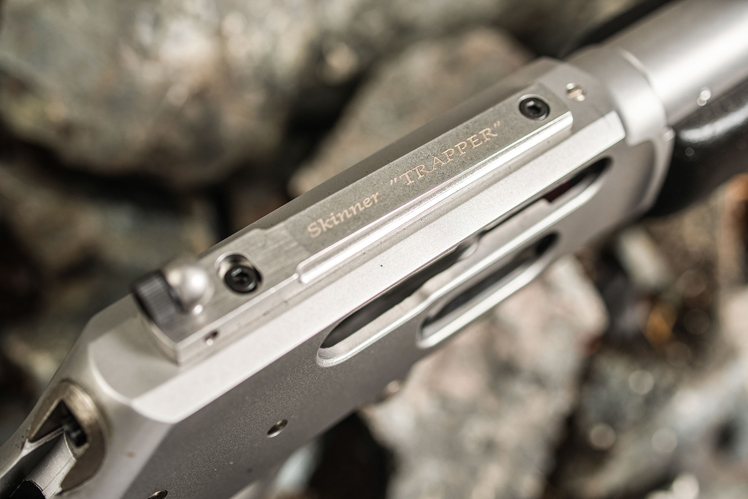
As with the larger Guide Guns, the Trapper comes with Marlin's ‘big loop lever’. Many people believe that this big loop was originally designed for use with gloves, but nobody at Marlin could confirm this, but they do claim that the big loop delivers easy cycling, but I’m not convinced.
Even if it is used predominantly with gloves, the big loop lever is still far too large in my opinion. I wear size large/extra-large gloves and even when wearing my winter hunting gloves, there is still three-quarters of an inch of space between the back of my fingers and the loop. This gap creates a small delay when cycling due to the extra distance my hand has to travel before engaging the lever.
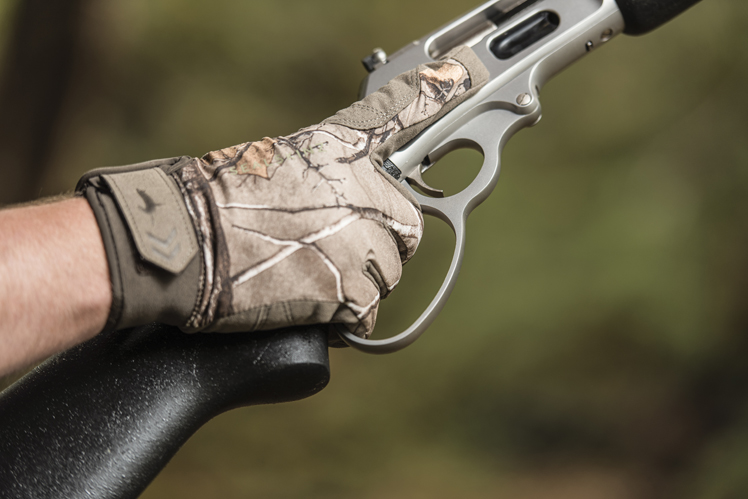
One of the main things that sets the Trapper apart from other 1895s is length. At sixteen and a half inches, the barrel is a full two inches shorter than its larger brethren. This also means, of course, that the overall length - at thirty five inches - is two inches shorter as well, which makes this rifle the handiest addition to an already very handy series.
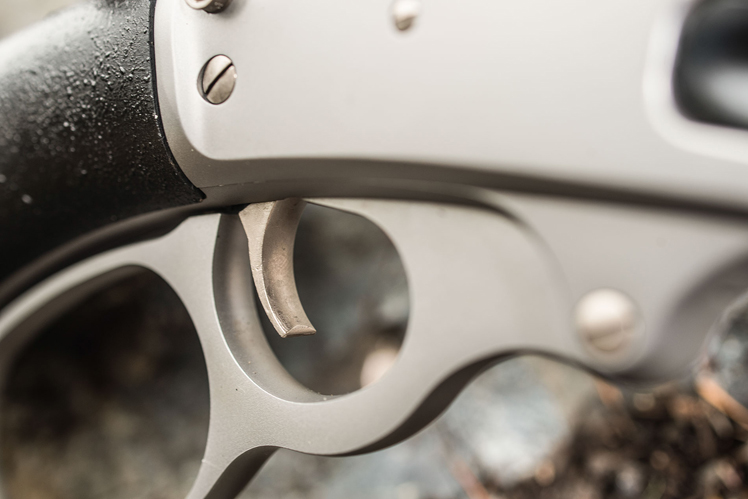
The two inch reduction in barrel length shaves a bit of weight too - the Trapper weighs around seven pounds, which is almost half a pound lighter than a GBL - but when compared side by side to either Guide Gun, the difference isn’t really noticeable.
Despite this minimally noticeable weight difference, the shorter barrel definitely makes the Trapper easier to carry through thick underbrush, and faster to bring to bear (no pun intended). These advantages brought to the table by short rifle barrels are well known, but what about the down sides?
Well to be honest, in a gun like this, I don’t think there are any. Compared to the eighteen and a half inch barrels of the GBL and SBL, the Marlin Trapper’s noise and muzzle flash appeared to be almost equivalent; and due to the similar weights, the felt recoil was about the same too. In fact, in practical handling terms, I’m not sure why anyone would prefer the longer Guide Guns.
As to be expected, the abbreviated barrel technically leads to a slight reduction in accuracy but, again, it’s hardly significant. And anyway, this rifle, and the .45-70 round it shoots, isn’t really designed for long ranges and, as such, the accuracy is as good as it should be.
Before delving any further into accuracy, we need to talk about sights. The Marlin Trapper comes with aperture sights made by Skinner Sights in Montana.
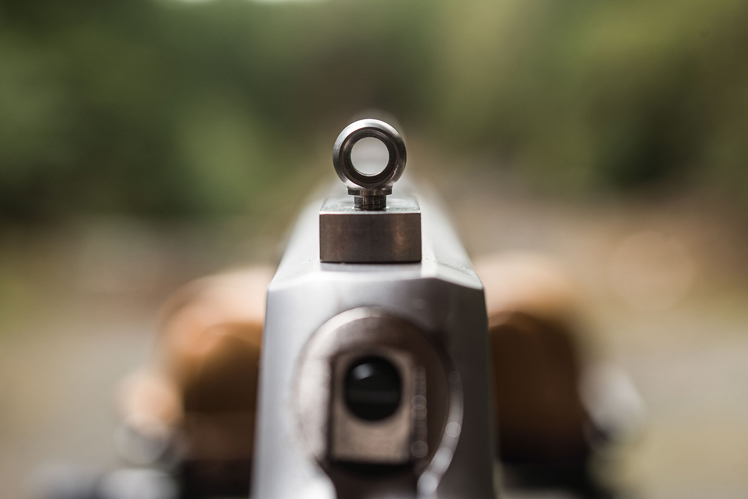
The ramped front sight blade is functional, but lacking in a couple of areas. Firstly, instead of sticking with stainless, they opted for blued steel. Not the worst thing in the world, but it does create a small chink in the Trapper’s otherwise weather-proof armour.
Secondly, and more importantly, the tall front blade has a bright white highlight which completely coats the visible part of the sight. I think this is a mistake because the white stripe has no contrast against the sight itself. When hunting most animals, this probably won’t be much of a problem. But this rifle is bound to find work as a defender where obtaining a fast sight picture is essential and, in bright sunlight, the stripe tends to wash out and almost disappear completely. Even worse, if the Marlin Trapper finds its way up north for use against polar bears, the very white sight against a very white animal in very white surroundings won’t make for the world’s best sight picture!
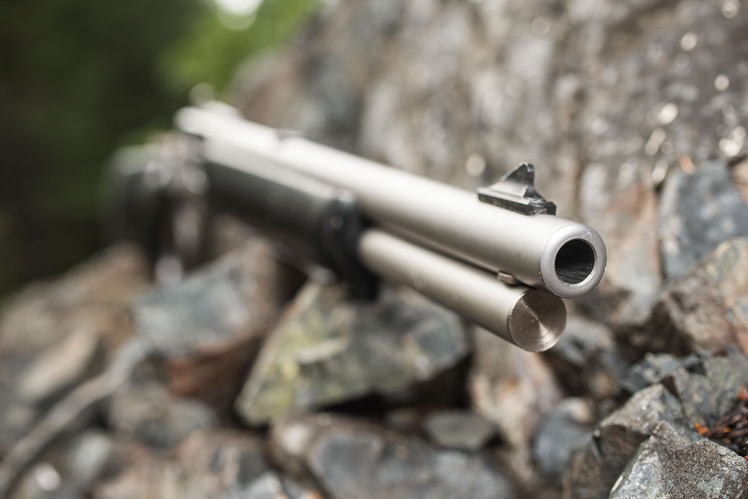
As with all 1895s, the side ejection port allows for easy mounting of a scope on top of the receiver, but the Skinner’s rear sight assembly needs to be removed and then replaced with an appropriate rail or mount first. Skinner makes two-piece Weaver bases, and a one-piece picatinny rail with integral aperture sight to fit.
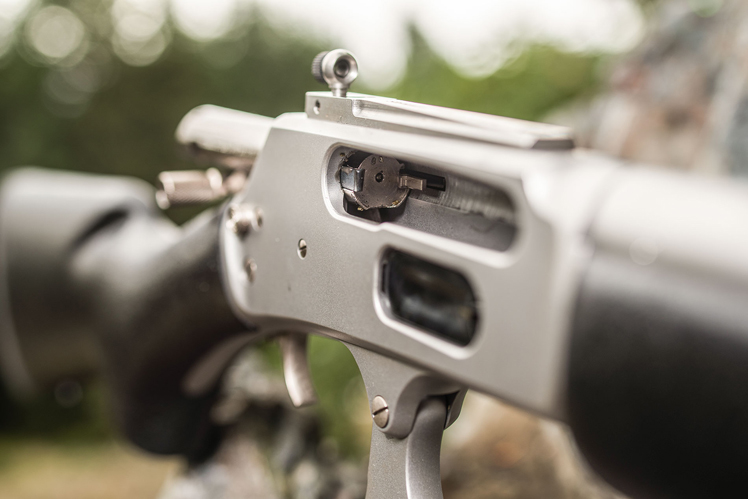
After zeroing the scope, I fired five-shot groups with a variety of ammo from a rest at fifty yards. It was raining, and there was a decent crosswind of about 25 kms/hr. Most of the groups were within about three inches, but there was some lateral drift due to the wind.
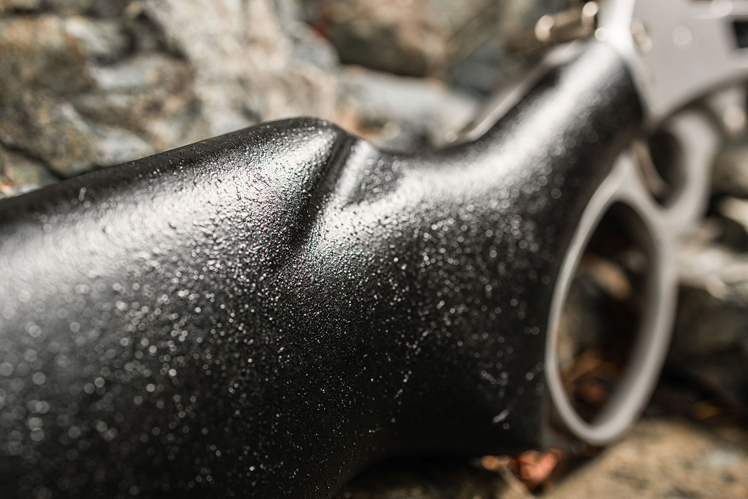
The Federal Fusion performed best overall, closely followed by the Federal Blue Box (PowerShok). I put this down to their lighter, faster, 300 grain bullets. And despite being a hefty 405 grains propelled by a reduced recoil load, the Winchester Super X performed pretty well too.
Most surprisingly, Hornady’s LeverEvolution 325 grain Flex Tips were a bit of a disappointment. Even though, according to the specs, these rounds had the highest ballistic coefficient of the bunch due to their jacketed FTX bullets, we didn’t notice a significant improvement in accuracy.
Finally, Remington’s Core-Lokt 405 grain soft points were all over the shop. The bullets seemed to have a mind of their own; even standing at ten yards they grouped at a ridiculous six inches.
Based on this, I would probably stick with the plain old Federal Blue Box which has the happy advantage of also being the cheapest at around $60 per box. The 300 grain soft points pack plenty enough punch, even for big bears.
Keep in mind that the .45-70 and it’s relatively fat, heavy bullets, is not renowned for its accuracy, particularly at long ranges. But that’s not what it’s designed for. It’s been around for over a hundred years and has forged itself a fearsome reputation amongst hunters, guides, and other wilderness workers as a savage bear-stopper, and that’s where the .45-70 can come into its own. It’s accurate enough for the job and, with an average muzzle energy of more than 3000 foot pounds, it hits bloody hard.
Due to the relatively high cost of factory .45-70 ammo, it makes an excellent option for hand-loaders. There’s a wide variety of factory-made bullets available or, thanks to Marlin’s ‘Ballard-type’ rifling with deep cut grooves, you can comfortably cast your own lead projectiles.
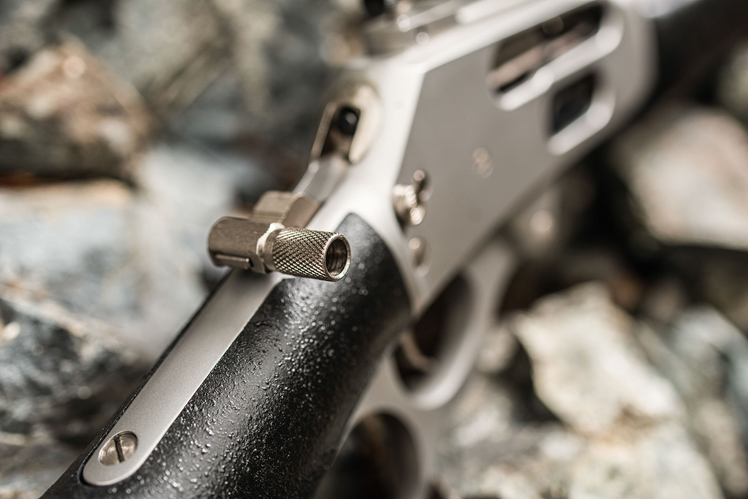
Coming in at around $1300, if you’re in the market for a reliable, hard hitting lever gun that’s good to look at and even better to shoot, then you can’t do much better than the Marlin 1895 Trapper - there’s nothing else quite like it.
Eddie Banner is a regular columnist for Calibre. The owner and operator of Instinct Canada, a personal safety, firearms, and first aid training company located on Vancouver Island, British Columbia, Eddie has extensive training and experience with firearms through both professional and private channels, and is an avid outdoorsman. Any questions pertaining to firearms training or safety for Eddie can be directed to eddie@calibremag.ca.